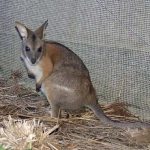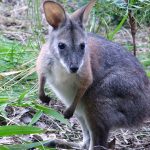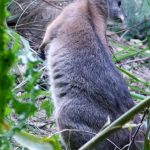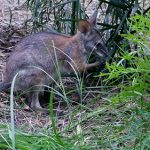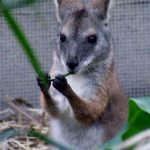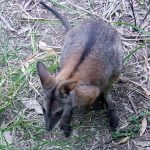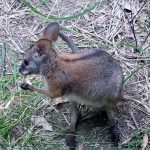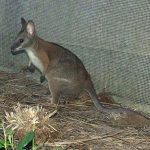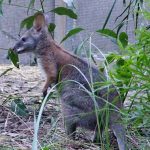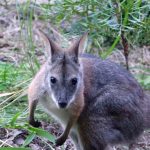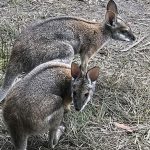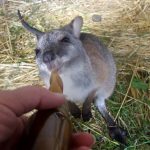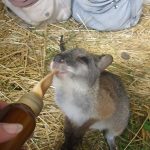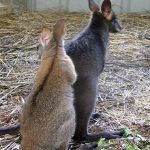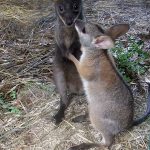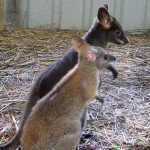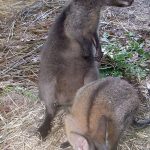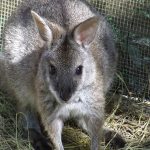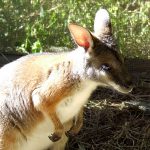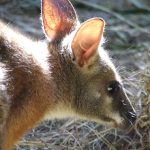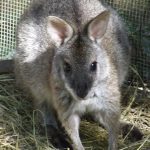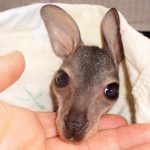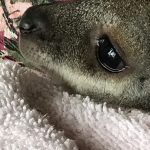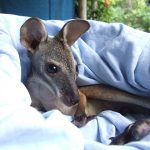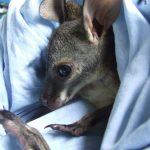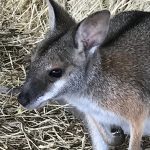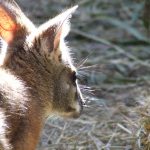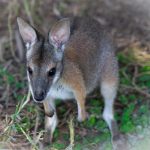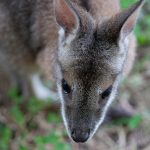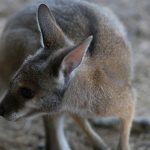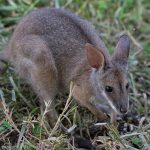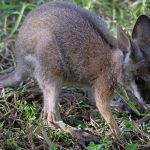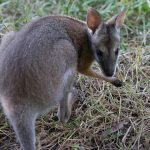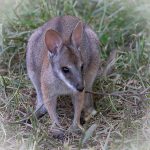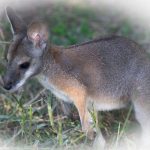BLACK-STRIPED WALLABY
Macropus dorsalis
Conservation status in NSW: Endangered
The Black-Striped wallaby, a fascinating species, exhibits distinct sexual dimorphism. Females are smaller, weighing 6-7.5kg and measuring 65cm tall, while males can reach a height of 1 meter and weigh 18-20kg.
These wallabies thrive in forested areas with dense undergrowth. They have a grayish-brown coat with reddish coloration on the shoulders and forearms. Their belly is creamy white, and they sport a notable white stripe on both hips, along with the eponymous black stripe running from the head to just above the rump.
During the day, Black-Striped wallabies rest beneath small trees or bushes, while at night, they gather in groups of up to 12 to forage for food in open grassy regions. They seldom venture more than 1km away from home, typically staying within 300 meters of cover.
Although their home range spans approximately 90 hectares, these wallabies tend to confine themselves to a smaller area of 10-15 hectares. Their primary diet consists of grass.
Early records from 1991 reveal that the Black-Striped wallaby is one of the common Macropods found in Eastern Australia, yet little was known about this species due to its preference for well-hidden habitats.
Unfortunately, the wallaby’s concealment was insufficient, as subsequent accounts from 2005 recount a decline in population. Once abundant in Central and southern Queensland, as well as Northern New South Wales, tens of thousands of these wallabies have been trapped and shot each year. They have virtually vanished from their former New South Wales habitat and are also disappearing in Queensland due to the clearance of ground cover for cattle pasture.
Regrettably, the Black-Striped wallaby (Macropus dorsalis) is now listed as endangered under the Biodiversity Conservation Act 2016 (NSW). This classification is warranted due to the following factors:
– Drastic reduction in population and distribution
– Facing severe threats
– Ecological specialization, relying on specific diet and habitat
– Limited potential for recovery
It is crucial to raise awareness and take action to protect and conserve this endangered species.

